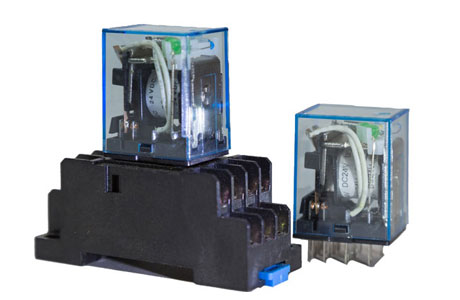Key Takeaway
The main advantage of a relay is its ability to switch both AC and DC currents. Relays can handle high voltages and large currents, typically more than 5A. They are also capable of switching multiple contacts at once, making them versatile for various applications. Relays provide isolation between the control circuit and the load, ensuring safety and protection. This makes them ideal for controlling high-power devices with low-power signals, offering reliability and efficiency in electrical systems.
Electrical Isolation
One of the main advantages of a relay is electrical isolation. Relays can isolate the low-power control circuit from the high-power load circuit, protecting sensitive components from potential damage. This isolation is achieved through the relay’s internal mechanism, which allows control signals to activate or deactivate the load circuit without direct electrical contact. For example, in industrial automation, relays protect microcontrollers from the high voltages used to power motors and other heavy machinery. This electrical isolation enhances system safety and reliability by preventing voltage spikes and surges from damaging critical control components.

Amplification of Signals
Relays can amplify signals, making them powerful tools for controlling larger loads with minimal input. Essentially, a small input current can activate a relay, which in turn can switch a much larger current in the load circuit. This amplification capability is particularly useful in scenarios where control systems must operate high-power devices without exerting significant power themselves. For example, in automotive applications, a small signal from the vehicle’s control unit can use a relay to activate the starter motor, which requires a much higher current. This ensures that the control unit does not need to handle the high current directly, thus preserving its integrity and longevity.
By amplifying signals, relays enable efficient and effective control of high-power systems using low-power signals. This functionality is also seen in industrial settings where small control signals from a PLC (Programmable Logic Controller) can activate large motors, pumps, or other machinery. The relay acts as a mediator, allowing the low-power control system to manage the high-power operational environment safely and efficiently. This capability highlights the importance of relays in both protecting control circuits and ensuring reliable operation of heavy-duty equipment.
You May Like to Read
Multiplexing Signals
Relays are also beneficial for multiplexing signals, allowing one control signal to manage multiple outputs. This feature is especially valuable in complex systems where multiple operations need to be controlled from a single point. For instance, in telecommunications, relays can be used to route signals to different channels, enabling efficient data management and communication routing. This capability simplifies the design of communication networks by reducing the amount of wiring and hardware needed to manage signal paths.
In industrial automation, multiplexing with relays allows a single control unit to manage various processes simultaneously. This can include starting and stopping multiple machines, directing different manufacturing stages, or controlling various safety interlocks. By enabling one control signal to trigger multiple actions, relays enhance system functionality and flexibility. This not only simplifies circuit design but also makes maintenance and troubleshooting easier. Multiplexing signals with relays ultimately leads to more streamlined and efficient control systems, reducing both complexity and cost while enhancing operational efficiency.
High Reliability
Another significant advantage of relays is their high reliability. Relays are designed to withstand millions of operations without failure, making them suitable for applications that require consistent performance over long periods. Their robust construction and ability to handle high currents and voltages without degradation contribute to their longevity and reliability. In critical applications such as emergency systems and industrial controls, the reliability of relays ensures that systems operate smoothly and without interruption, minimizing downtime and maintenance costs. For instance, in an industrial setting, relays can control essential processes and machinery, ensuring continuous and safe operations. The dependable nature of relays means they can be trusted to function correctly in high-stakes situations, providing peace of mind and operational security.
Versatility in Applications
Relays offer remarkable versatility, being applicable in a wide range of industries and systems. They can be used in simple switching operations, complex automation systems, and everything in between. From controlling household appliances to managing sophisticated industrial machinery, relays provide flexible solutions that can be tailored to specific needs. This versatility extends to various relay types, including electromechanical, solid-state, and reed relays, each suited for different applications.
For example, electromechanical relays are commonly used in general-purpose switching, while solid-state relays are favored in applications requiring high-speed switching and long life. Reed relays are ideal for low-current applications requiring high reliability. This adaptability makes relays a fundamental component in designing and implementing diverse electrical and electronic systems, ensuring they can meet the specific demands of various projects efficiently.
Conclusion
Relays provide several key advantages, including electrical isolation, signal amplification, multiplexing capabilities, high reliability, and versatility in applications. These benefits make relays essential components in many electrical systems, from simple household circuits to complex industrial controls. For newly joined engineers, understanding these advantages is crucial for designing effective and reliable systems. By leveraging the strengths of relays, you can enhance the performance, safety, and efficiency of your electrical projects, ensuring success in a wide range of applications.
